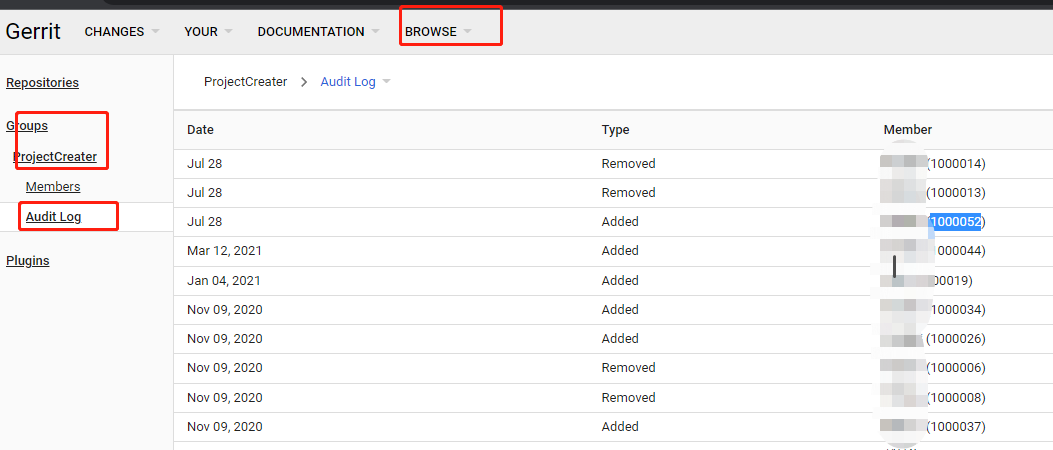链接:
https://blog.csdn.net/aikker/article/details/4050888
在开发界面及棋牌游戏过程中,需要很多镂空的图片,而且图片形式一般比较固定.
所以封装了几种常见的镂空方法.
1. 用于没有掩码图,只有指定透明色,不进行伸缩
void DrawTransBitmap( HDC hdcDest, // 目标DC
int nXOriginDest, // 目标X偏移
int nYOriginDest, // 目标Y偏移
int nWidthDest, // 目标宽度
int nHeightDest, // 目标高度
HDC hdcSrc, // 源DC
int nXOriginSrc, // 源X起点
int nYOriginSrc, // 源Y起点
COLORREF crTransparent // 透明色,COLORREF类型
);
2. 用于没有掩码图,只有指定透明色,可以进行伸缩
void DrawTransBitmap( HDC hdcDest, // 目标DC
int nXOriginDest, // 目标X偏移
int nYOriginDest, // 目标Y偏移
int nWidthDest, // 目标宽度
int nHeightDest, // 目标高度
HDC hdcSrc, // 源DC
int nXOriginSrc, // 源X起点
int nYOriginSrc, // 源Y起点
int nWidthSrc, // 源宽度
int nHeightSrc, // 源高度
COLORREF crTransparent // 透明色,COLORREF类型
);
3.指定掩码图,和掩码图属于不同图片
void DrawTransBitmap( HDC hdcDest, // 目标DC
int nXOriginDest, // 目标X偏移
int nYOriginDest, // 目标Y偏移
int nWidthDest, // 目标宽度
int nHeightDest, // 目标高度
HDC hdcSrc, // 源DC
HDC hdcMask, //掩码DC
int nXOriginSrc, // 源X起点
int nYOriginSrc, // 源Y起点
COLORREF crTransparent // 透明色,COLORREF类型
);
4.指定图片和掩码图同属于一张图片
void DrawTransBitmap(HDC hDC,
int nPosX,
int nPosY,
int nCX,
int nCY,
HBITMAP hObj
);
5.得到位图HRGN
HRGN CreateBitmapRgn(int nWidth,int nHeight,HBITMAP hbmp,COLORREF cTrans);
以下是完整代码
//用于没有掩码图,只有指定透明色,不进行伸缩
//方法一:
void DrawTransBitmap( HDC hdcDest, //目标DC
int nXOriginDest, //目标X偏移
int nYOriginDest, //目标Y偏移
int nWidthDest, //目标宽度
int nHeightDest, //目标高度
HDC hdcSrc, //源DC
int nXOriginSrc, //源X起点
int nYOriginSrc, //源Y起点
COLORREF crTransparent //透明色,COLORREF类型
)
{
HBITMAP hOldImageBMP, hImageBMP= CreateCompatibleBitmap(hdcDest, nWidthDest, nHeightDest); //创建兼容位图
HBITMAP hOldMaskBMP, hMaskBMP = CreateBitmap(nWidthDest, nHeightDest, 1, 1, NULL); //创建单色掩码位图
HDC hImageDC = CreateCompatibleDC(hdcDest);//临时DC
HDC hMaskDC = CreateCompatibleDC(hdcDest);//临时掩码DC
hOldImageBMP =(HBITMAP)SelectObject(hImageDC, hImageBMP);
hOldMaskBMP=(HBITMAP)SelectObject(hMaskDC, hMaskBMP);//将源DC中的位图拷贝到临时DC中,源DC已经载入位图
BitBlt(hImageDC, 0, 0, nWidthDest, nHeightDest, hdcSrc, nXOriginSrc, nYOriginSrc, SRCCOPY);//设置临时DC的透明色
SetBkColor(hImageDC, crTransparent);//生成透明区域为白色,其它区域为黑色的临时掩码DC的掩码位图//位图来自临时DC
BitBlt(hMaskDC, 0, 0, nWidthDest, nHeightDest, hImageDC, 0, 0, SRCCOPY);//生成透明区域为黑色,其它区域保持不变的位图
SetBkColor(hImageDC, RGB(0,0,0));
SetTextColor(hImageDC, RGB(255,255,255));
BitBlt(hImageDC,0, 0, nWidthDest, nHeightDest, hMaskDC, 0, 0, SRCAND);//透明部分保持屏幕不变,其它部分变成黑色
SetBkColor(hdcDest,RGB(255,255,255));
SetTextColor(hdcDest,RGB(0,0,0));
BitBlt(hdcDest, nXOriginDest, nYOriginDest, nWidthDest, nHeightDest, hMaskDC,0, 0, SRCAND);//"或"运算,生成最终效果
BitBlt(hdcDest, nXOriginDest, nYOriginDest, nWidthDest, nHeightDest, hImageDC, 0, 0, SRCPAINT);//清理、恢复
SelectObject(hImageDC, hOldImageBMP);
DeleteDC(hImageDC);
SelectObject(hMaskDC, hOldMaskBMP);
DeleteDC(hMaskDC);
DeleteObject(hImageBMP);
DeleteObject(hMaskBMP);
}//用于没有掩码图,只有指定透明色,不进行伸缩
//方法二:
void DrawTransBitmap( HDC hdcDest, //目标DC
int nXOriginDest, //目标X偏移
int nYOriginDest, //目标Y偏移
int nWidthDest, //目标宽度
int nHeightDest, //目标高度
HDC hdcSrc, //源DC
int nXOriginSrc, //源X起点
int nYOriginSrc, //源Y起点
COLORREF crTransparent //透明色,COLORREF类型
)
{
HBITMAP hOldImageBMP, hImageBMP= CreateCompatibleBitmap(hdcDest, nWidthDest, nHeightDest); //创建兼容位图
HBITMAP hOldMaskBMP, hMaskBMP = CreateBitmap(nWidthDest, nHeightDest, 1, 1, NULL); //创建单色掩码位图
HDC hImageDC = CreateCompatibleDC(hdcDest);//临时DC
HDC hMaskDC = CreateCompatibleDC(hdcDest);//临时掩码DC
hOldImageBMP =(HBITMAP)SelectObject(hImageDC, hImageBMP);
hOldMaskBMP=(HBITMAP)SelectObject(hMaskDC, hMaskBMP);//将源DC中的位图拷贝到临时DC中,源DC已经载入位图
BitBlt(hImageDC, 0, 0, nWidthDest, nHeightDest, hdcSrc, nXOriginSrc, nYOriginSrc, SRCCOPY);//设置临时DC的透明色
SetBkColor(hImageDC, crTransparent);//生成透明区域为白色,其它区域为黑色的临时掩码DC的掩码位图//位图来自临时DC
BitBlt(hMaskDC, 0, 0, nWidthDest, nHeightDest, hImageDC, 0, 0, SRCCOPY);
BitBlt(hdcDest, nXOriginDest, nYOriginDest, nWidthDest, nHeightDest, hImageDC,0, 0, SRCINVERT);
BitBlt(hdcDest, nXOriginDest, nYOriginDest, nWidthDest, nHeightDest, hMaskDC,0, 0, SRCAND);
BitBlt(hdcDest, nXOriginDest, nYOriginDest, nWidthDest, nHeightDest, hImageDC,0, 0, SRCINVERT);//清理、恢复
SelectObject(hImageDC, hOldImageBMP);
DeleteDC(hImageDC);
SelectObject(hMaskDC, hOldMaskBMP);
DeleteDC(hMaskDC);
DeleteObject(hImageBMP);
DeleteObject(hMaskBMP);
}//用于没有掩码图,只有指定透明色,可以进行伸缩
//方法一:
void DrawTransBitmap( HDC hdcDest, //目标DC
int nXOriginDest, //目标X偏移
int nYOriginDest, //目标Y偏移
int nWidthDest, //目标宽度
int nHeightDest, //目标高度
HDC hdcSrc, //源DC
int nXOriginSrc, //源X起点
int nYOriginSrc, //源Y起点
int nWidthSrc, //源宽度
int nHeightSrc, //源高度
COLORREF crTransparent //透明色,COLORREF类型
)
{
HBITMAP hOldImageBMP, hImageBMP= CreateCompatibleBitmap(hdcDest, nWidthDest, nHeightDest); //创建兼容位图
HBITMAP hOldMaskBMP, hMaskBMP = CreateBitmap(nWidthDest, nHeightDest, 1, 1, NULL); //创建单色掩码位图
HDC hImageDC =CreateCompatibleDC(hdcDest);
HDC hMaskDC=CreateCompatibleDC(hdcDest);
hOldImageBMP=(HBITMAP)SelectObject(hImageDC, hImageBMP);
hOldMaskBMP=(HBITMAP)SelectObject(hMaskDC, hMaskBMP);//将源DC中的位图拷贝到临时DC中
if (nWidthDest == nWidthSrc && nHeightDest ==nHeightSrc)
{
BitBlt(hImageDC,0, 0, nWidthDest, nHeightDest, hdcSrc, nXOriginSrc, nYOriginSrc, SRCCOPY);
}else{
StretchBlt(hImageDC,0, 0, nWidthDest, nHeightDest,
hdcSrc, nXOriginSrc, nYOriginSrc, nWidthSrc, nHeightSrc, SRCCOPY);
}//设置透明色
SetBkColor(hImageDC, crTransparent);//生成透明区域为白色,其它区域为黑色的掩码位图
BitBlt(hMaskDC, 0, 0, nWidthDest, nHeightDest, hImageDC, 0, 0, SRCCOPY);//生成透明区域为黑色,其它区域保持不变的位图
SetBkColor(hImageDC, RGB(0,0,0));
SetTextColor(hImageDC, RGB(255,255,255));
BitBlt(hImageDC,0, 0, nWidthDest, nHeightDest, hMaskDC, 0, 0, SRCAND);//透明部分保持屏幕不变,其它部分变成黑色
SetBkColor(hdcDest,RGB(0xff,0xff,0xff));
SetTextColor(hdcDest,RGB(0,0,0));
BitBlt(hdcDest, nXOriginDest, nYOriginDest, nWidthDest, nHeightDest, hMaskDC,0, 0, SRCAND);//"或"运算,生成最终效果
BitBlt(hdcDest, nXOriginDest, nYOriginDest, nWidthDest, nHeightDest, hImageDC, 0, 0, SRCPAINT);
SelectObject(hImageDC, hOldImageBMP);
DeleteDC(hImageDC);
SelectObject(hMaskDC, hOldMaskBMP);
DeleteDC(hMaskDC);
DeleteObject(hImageBMP);
DeleteObject(hMaskBMP);
}
//用于没有掩码图,只有指定透明色,可以进行伸缩
//方法二:
void DrawTransBitmap( HDC hdcDest, //目标DC
int nXOriginDest, //目标X偏移
int nYOriginDest, //目标Y偏移
int nWidthDest, //目标宽度
int nHeightDest, //目标高度
HDC hdcSrc, //源DC
int nXOriginSrc, //源X起点
int nYOriginSrc, //源Y起点
int nWidthSrc, //源宽度
int nHeightSrc, //源高度
COLORREF crTransparent //透明色,COLORREF类型
)
{if (nWidthDest < 1) return false;if (nWidthSrc < 1) return false;if (nHeightDest < 1) return false;if (nHeightSrc < 1) return false;
HDC dc=CreateCompatibleDC(NULL);
HBITMAP bitmap= CreateBitmap(nWidthSrc, nHeightSrc, 1, GetDeviceCaps(dc,
BITSPIXEL), NULL);if (bitmap ==NULL)
{
DeleteDC(dc);return false;
}
HBITMAP oldBitmap=(HBITMAP)SelectObject(dc, bitmap);if (!BitBlt(dc, 0, 0, nWidthSrc, nHeightSrc, dcSrc, nXOriginSrc,
nYOriginSrc, SRCCOPY))
{
SelectObject(dc, oldBitmap);
DeleteObject(bitmap);
DeleteDC(dc);return false;
}
HDC maskDC=CreateCompatibleDC(NULL);
HBITMAP maskBitmap= CreateBitmap(nWidthSrc, nHeightSrc, 1, 1, NULL);if (maskBitmap ==NULL)
{
SelectObject(dc, oldBitmap);
DeleteObject(bitmap);
DeleteDC(dc);
DeleteDC(maskDC);return false;
}
HBITMAP oldMask=(HBITMAP)SelectObject(maskDC, maskBitmap);
SetBkColor(maskDC, RGB(0,0,0));
SetTextColor(maskDC, RGB(255,255,255));if (!BitBlt(maskDC, 0,0,nWidthSrc,nHeightSrc,NULL,0,0,BLACKNESS))
{
SelectObject(maskDC, oldMask);
DeleteObject(maskBitmap);
DeleteDC(maskDC);
SelectObject(dc, oldBitmap);
DeleteObject(bitmap);
DeleteDC(dc);return false;
}
SetBkColor(dc, crTransparent);
BitBlt(maskDC,0,0,nWidthSrc,nHeightSrc,dc,0,0,SRCINVERT);
SetBkColor(dc, RGB(0,0,0));
SetTextColor(dc, RGB(255,255,255));
BitBlt(dc,0,0,nWidthSrc,nHeightSrc,maskDC,0,0,SRCAND);
HDC newMaskDC=CreateCompatibleDC(NULL);
HBITMAP newMask;
newMask= CreateBitmap(nWidthDest, nHeightDest, 1,
GetDeviceCaps(newMaskDC, BITSPIXEL), NULL);if (newMask ==NULL)
{
SelectObject(dc, oldBitmap);
DeleteDC(dc);
SelectObject(maskDC, oldMask);
DeleteDC(maskDC);
DeleteDC(newMaskDC);
DeleteObject(bitmap);
DeleteObject(maskBitmap);return false;
}
SetStretchBltMode(newMaskDC, COLORONCOLOR);
HBITMAP oldNewMask=(HBITMAP) SelectObject(newMaskDC, newMask);
StretchBlt(newMaskDC,0, 0, nWidthDest, nHeightDest, maskDC, 0, 0,
nWidthSrc, nHeightSrc, SRCCOPY);
SelectObject(maskDC, oldMask);
DeleteDC(maskDC);
DeleteObject(maskBitmap);
HDC newImageDC=CreateCompatibleDC(NULL);
HBITMAP newImage= CreateBitmap(nWidthDest, nHeightDest, 1,
GetDeviceCaps(newMaskDC, BITSPIXEL), NULL);if (newImage ==NULL)
{
SelectObject(dc, oldBitmap);
DeleteDC(dc);
DeleteDC(newMaskDC);
DeleteObject(bitmap);return false;
}
HBITMAP oldNewImage=(HBITMAP)SelectObject(newImageDC, newImage);
StretchBlt(newImageDC,0, 0, nWidthDest, nHeightDest, dc, 0, 0, nWidthSrc,
nHeightSrc, SRCCOPY);
SelectObject(dc, oldBitmap);
DeleteDC(dc);
DeleteObject(bitmap);
BitBlt( dcDest, nXOriginDest, nYOriginDest, nWidthDest, nHeightDest,
newMaskDC,0, 0, SRCAND);
BitBlt( dcDest, nXOriginDest, nYOriginDest, nWidthDest, nHeightDest,
newImageDC,0, 0, SRCPAINT);
SelectObject(newImageDC, oldNewImage);
DeleteDC(newImageDC);
SelectObject(newMaskDC, oldNewMask);
DeleteDC(newMaskDC);
DeleteObject(newImage);
DeleteObject(newMask);return true;
}指定掩码图,和掩码图属于不同图片
void DrawTransBitmap( HDC hdcDest, //目标DC
int nXOriginDest, //目标X偏移
int nYOriginDest, //目标Y偏移
int nWidthDest, //目标宽度
int nHeightDest, //目标高度
HDC hdcSrc, //源DC
HDC hdcMask,int nXOriginSrc, //源X起点
int nYOriginSrc, //源Y起点
COLORREF crTransparent //透明色,COLORREF类型
)
{
HBITMAP hOldImageBMP, hImageBMP= CreateCompatibleBitmap(hdcDest, nWidthDest, nHeightDest); //创建兼容位图
HDC hImageDC = CreateCompatibleDC(hdcDest);//临时DC
hOldImageBMP =(HBITMAP)SelectObject(hImageDC, hImageBMP);//将源DC中的位图拷贝到临时DC中,源DC已经载入位图
BitBlt(hImageDC, 0, 0, nWidthDest, nHeightDest, hdcSrc, nXOriginSrc, nYOriginSrc, SRCCOPY);//设置临时DC的透明色
SetBkColor(hImageDC, crTransparent);//生成透明区域为黑色,其它区域保持不变的位图
SetBkColor(hImageDC, RGB(0,0,0));
SetTextColor(hImageDC, RGB(255,255,255));
BitBlt(hImageDC,0, 0, nWidthDest, nHeightDest, hdcMask, 0, 0, SRCAND);//透明部分保持屏幕不变,其它部分变成黑色
SetBkColor(hdcDest,RGB(255,255,255));
SetTextColor(hdcDest,RGB(0,0,0));
BitBlt(hdcDest, nXOriginDest, nYOriginDest, nWidthDest, nHeightDest, hdcMask,0, 0, SRCAND);//"或"运算,生成最终效果
BitBlt(hdcDest, nXOriginDest, nYOriginDest, nWidthDest, nHeightDest, hImageDC, 0, 0, SRCPAINT);//清理、恢复
SelectObject(hImageDC, hOldImageBMP);
DeleteDC(hImageDC);
DeleteObject(hImageBMP);
}//指定图片和掩码图同属于一张图片
void DrawTransBitmap(HDC hDC, int nPosX, int nPosY, int nCX, intnCY, HBITMAP hObj)
{
HDC hMemDC=CreateCompatibleDC(hDC);
HBITMAP hOldBMP=(HBITMAP)::SelectObject(hMemDC,hObj);
BitBlt(hDC,nPosX,nPosY,nCX,nCY, hMemDC,nCX,0,SRCAND);
BitBlt(hDC,nPosX,nPosY,nCX,nCY, hMemDC,0,0,SRCPAINT);
SelectObject(hMemDC,hOldBMP);
DeleteDC(hMemDC);
}
HRGN CreateBitmapRgn(int nWidth,intnHeight,HBITMAP hbmp, COLORREF TransColor)
{
HDC hmemDC;//创建与传入DC兼容的临时DC
hmemDC =::CreateCompatibleDC(NULL);
HBITMAP hOldBmp=(HBITMAP)::SelectObject(hmemDC,hbmp);//创建总的窗体区域,初始region为0
HRGN hrgn;
hrgn= ::CreateRectRgn(0,0,0,0);inty;for(y=0;y<nHeight ;y++)
{
HRGN rgnTemp;//保存临时region
int iX = 0;do{//跳过透明色找到下一个非透明色的点.
while (iX < nWidth && ::GetPixel(hmemDC,iX, y) ==TransColor)
iX++;//记住这个起始点
int iLeftX =iX;//寻找下个透明色的点
while (iX < nWidth && ::GetPixel(hmemDC,iX, y) !=TransColor)++iX;//创建一个包含起点与重点间高为1像素的临时“region”
rgnTemp=::CreateRectRgn(iLeftX, y, iX, y+1);//合并到主"region".
CombineRgn( hrgn,hrgn,rgnTemp, RGN_OR);//删除临时"region",否则下次创建时和出错
::DeleteObject(rgnTemp);
}while(iX <nWidth );
iX= 0;
}
::SelectObject(hmemDC,hOldBmp);
::DeleteDC(hmemDC);returnhrgn;
}


